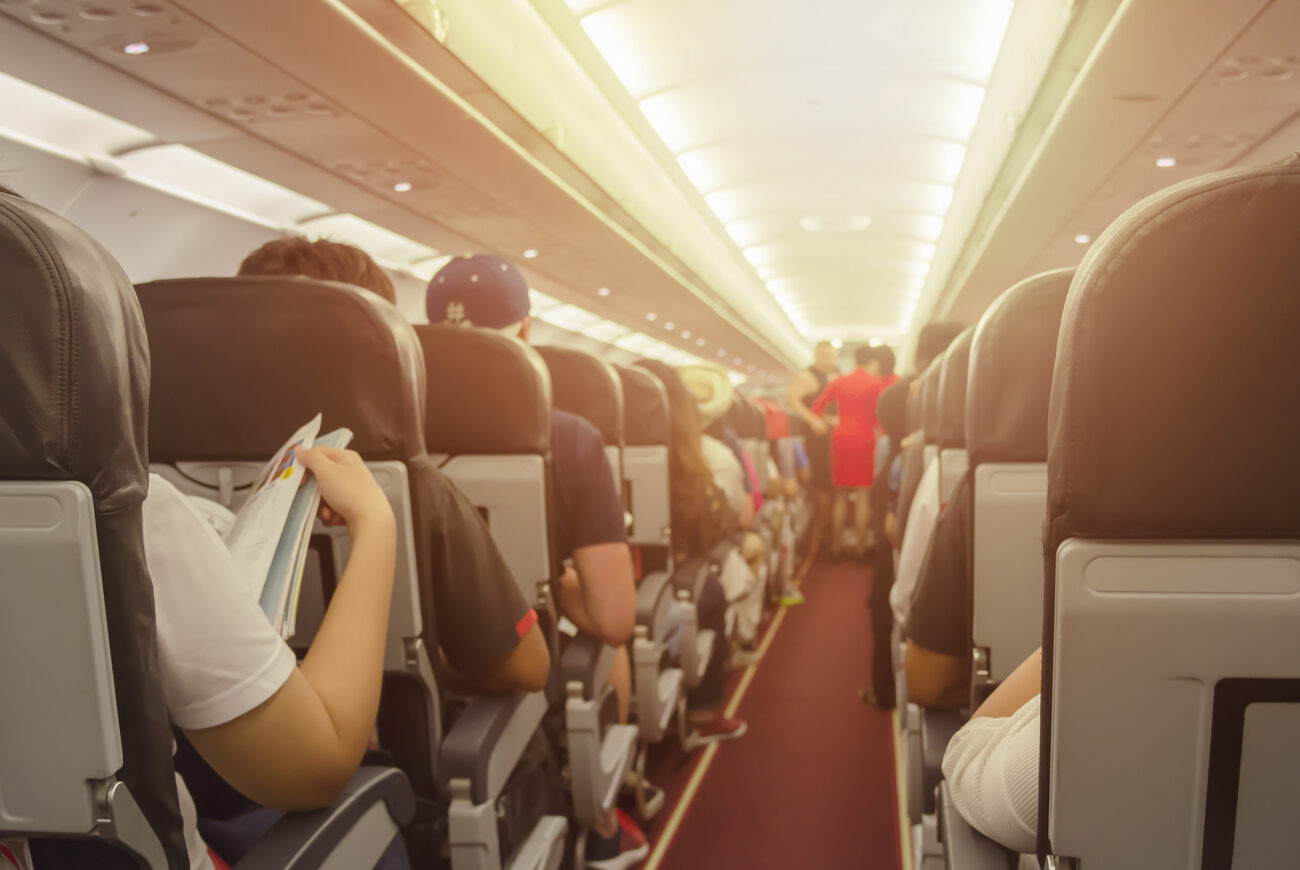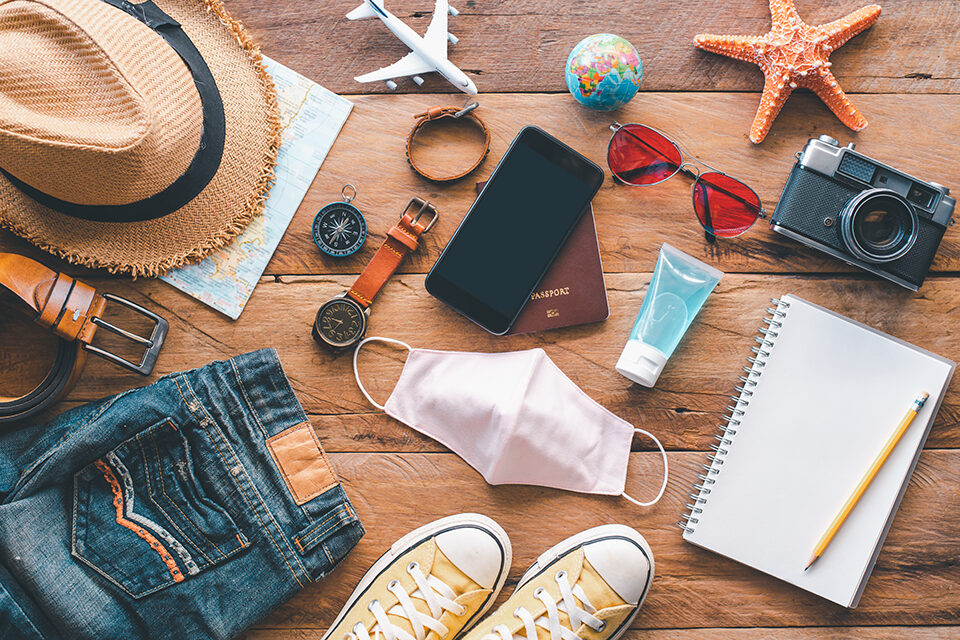In quarters as tight as airplanes, everyone’s nerves are more easily frazzled. How best to keep the peace? By never, ever being guilty of these bad neighbor behaviors.
When you have a travel advisor, planning a vacation becomes the least challenging part of the getaway experience. What then skyrockets to number one? Keeping cool (literally and figuratively!), calm, and collected en route.
As OnlyWanderlust.com founder Amar Hussain pointed out in a recent study the publication conducted, there are still a lot of travelers who are only now returning to air travel. “We were interested to see what the most common annoyance is and where improper mask-wearing ranked as it is a new addition to air travel,” he says of this 1,500-passenger poll, because a long break such as many took altered the way we think of flying. Passport-Photo.Online also surveyed 1,000 Americans to get a gauge on the lowest moments of those soaring 36,000 feet in the air.
Why It’s Important to be a Good Airplane Neighbor
Less a matter of course than before the pandemic, we have to be reconditioned again to the close quarters of air travel. The gap also gave time enough for travel anxieties to build in nervous fliers, which might mean a higher level of accommodation for them.
It’s up to experienced travelers to help those on the fence climb right over it and become comfortable with air travel again. The more we can alleviate stressors and annoyances, the more positive everyone’s experiences will be. And it’s also up to those new again to flying to brush up on airplane etiquette and the many unspoken rules that help ensure as pleasant a flight as possible, with lower risk of flare-ups.
So to keep travel moving forward, here are some of the top gripes of airplane passengers nationwide … and how by avoiding them, you can be a part of bringing back the joy of travel.
How to Fly with Courtesy
1. Respect set boundaries and personal space.
THE SEAT: Apparently, there is nothing in the world more infuriating than having your back kicked while you’re trying to “sit back and enjoy the flight.” In fact, seat-kicking beats out over-recliners by a tremendous margin in the Only Wanderlust poll, coming up six spots ahead. In between kicking and reclining is seat-pulling—when a passenger yanks on your seat or leans against it when getting up. Best practice? Just don’t touch anyone’s seat. With limited leg room, it might be hard (especially as you try to avoid another big peeve of over-spreading your legs!), but any effort to avoid messing with a fellow passenger’s seat will be sincerely appreciated.
THE ARMREST: Ah, these two-inch-wide strips are perhaps the most hotly contested part of any plane. There are unspoken rules about who gets the armrest—the window seat gets the wall, natch, the aisle gets that armrest, but the middle? This is where tempers flare. The best thing to do is take the cue of the person sitting in the least desirable seat in the row, then adjusting to their need. Rarer and perhaps more horrifying, however, are those passengers who use the center armrest … of the seat in front of them. There is not a single person who doesn’t find it objectionable to find a stranger’s feet pushed up against their elbows from the gap between the seats. Just don’t do it.
THE GENERAL AREA: While it was merely an annoyance to have eager beavers standing too close while waiting to clear security or board, after COVID, it can now be extremely triggering to 75% of passengers when people stand too close. The six-foot rule may not always be possible, but allowing some breathing room to fellow travelers can relieve a considerable amount of stress for others. And respecting personal space isn’t just about germs—for some travelers, it’s a matter of feeling that your belongings are safe, and for women, that your body is, too.
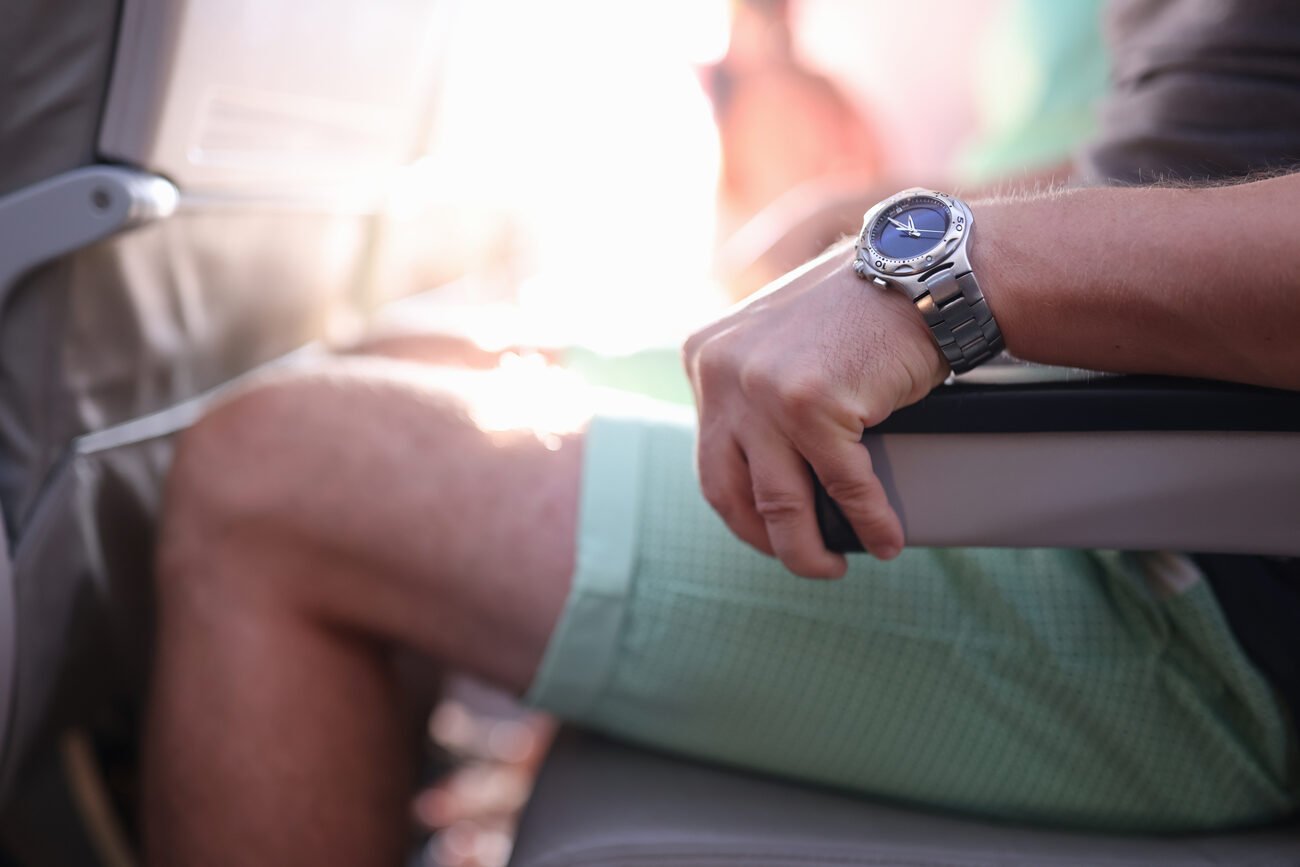
2. Cover your mouth.
COUGHS & SNEEZES: Covering your mouth when you cough or sneeze should be a given in any situation, but unfortunately, not everyone always does. The age of COVID—and when in the close proximity of others as occurs in shuttle, airport, or airplane—has people even more sensitive to spraying germs into the air. It’s not only polite, but best hygienic practice to aim for the inside of your elbow in either case, wherever you may be.
MASKS: The second part of this peeve is people who are improperly or refusing to wear masks. Roughly 73% of those surveyed by Passport-Photo.online find it upsetting, and this ranked #9 out of the 20 biggest pain points reported by Only Wanderlust.
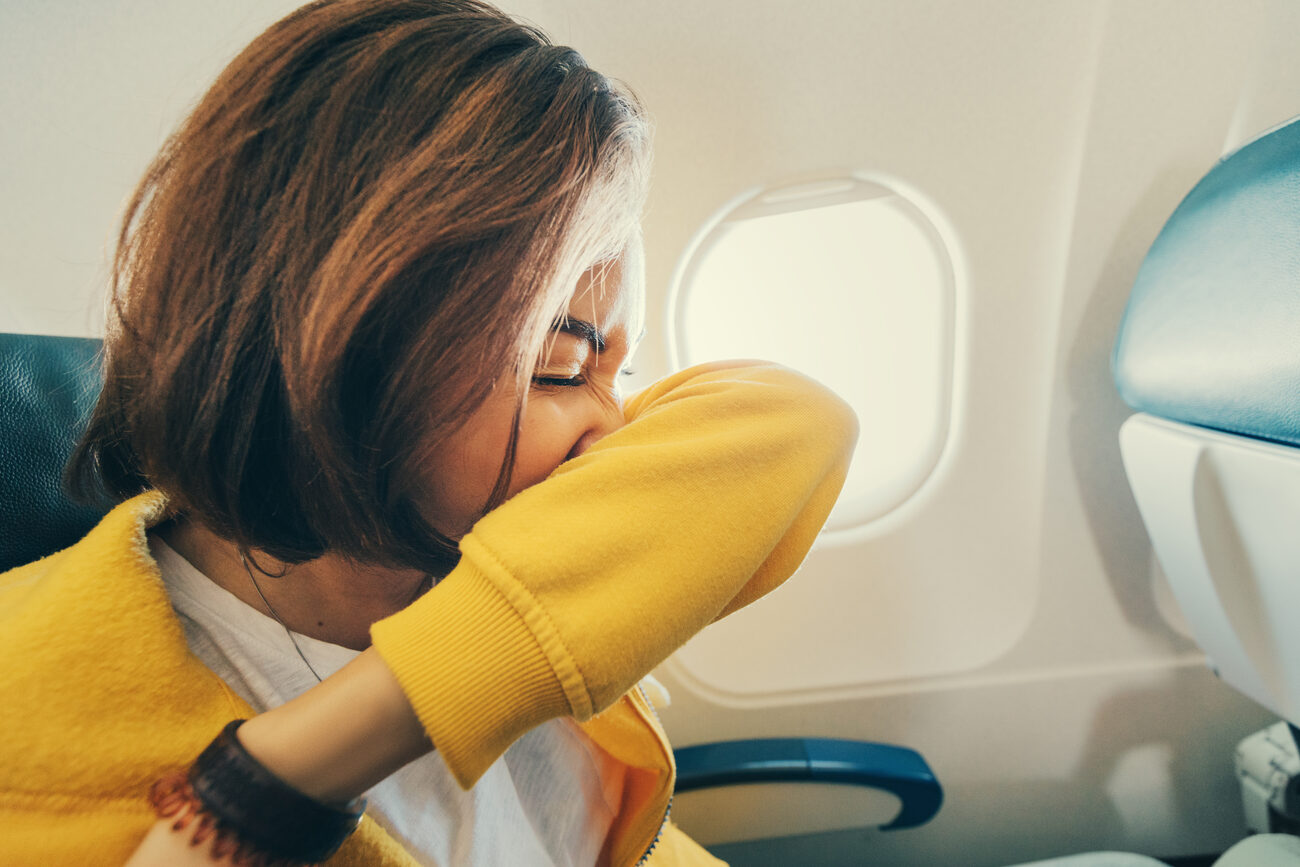
3. Don’t be a noise nuisance.
DEVICE SPEAKERS: No matter what you’re listening to or watching, there is no excuse for blasting it through your device speakers. A comfortable set of headphones are essential to any experienced traveler, and that’s not just for that passenger’s personal sanity. According to the survey, having your audio on is seen as equally obnoxious to being touched by the strangers you’re traveling with. Keep your dings, beeps, and other annoying sounds to yourself to avoid confrontation—and that includes for your child’s tablet, too.
INSIDE VOICE: Speaking of children, crying babies and kids are immediate cringes for many adult passengers, even if they’re parents themselves. While there’s not much you can do to soothe them when they’re worked up, it’s good to have a plan of distraction. (We offer some great travel tips for antsy kids here!) But adults can be just as guilty. If you’re drinking on the plane, be aware of what that may do to the volume of your voice, and adjust for it.
OVER-CHATTING: Many passengers try to pass the time on their flight with a variety of independent activities, whether it’s catching up on sleep, light reading, or just zoning out to their music. While others like to spend this time talking to old friends or making new ones, be sure to watch out for cues. Anyone with headphones on or a laptop out likely doesn’t want to be disturbed, and someone with a sleep mask and neck pillow definitely isn’t feeling conversational. Make sure to read the room, and if you find yourself connecting with a fellow passenger, keep your voice down so that you don’t break through other passengers’ z’s.
CLAPPING: If there’s anything that marks a newbie traveler as inexperienced, it’s clapping when the plane lands. According to both studies, people absolutely hate this tacky gesture. Granted, they don’t despise it as much as those who get up immediately upon landing, crowding the aisle and other passengers, though. At least with the applause, that’s over quickly, while the deplaning stand-and-hover always takes too long.
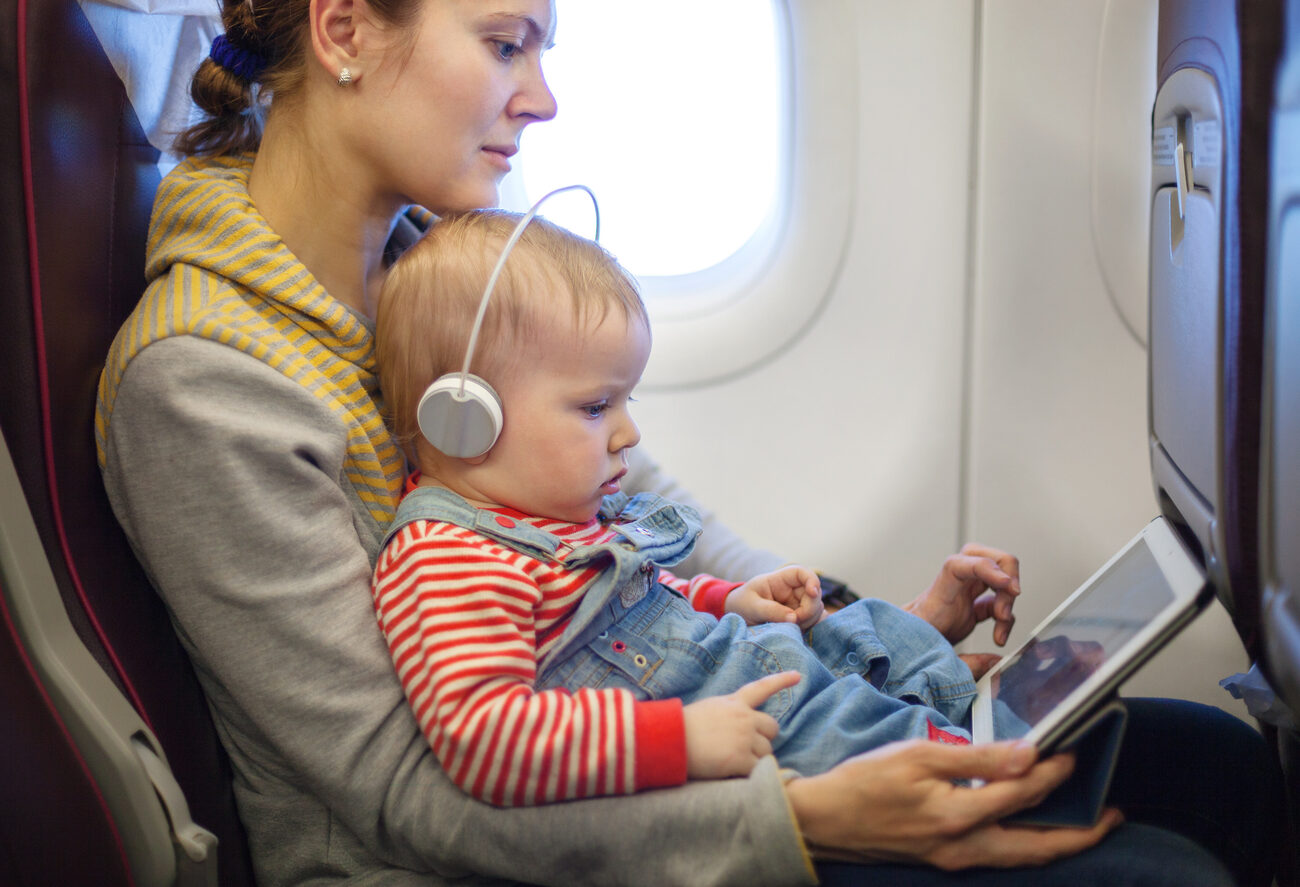
4. Treat the space with respect.
OVERHEAD BINS: Carry-on luggage dimensions are what they are to maximize the space provided in overhead bins. By putting your suitcase in the bin wheels in, narrow side out, it makes it not only easier to grab on your way out, but makes sure that your neighbor has room for their bag as well. Plus, putting it in properly means fewer hands on your luggage, whether it’s the flight attendant trying to eke out another crucial inch of space or another passenger adjusting to push their items in.
CABIN: Yes, the planes are cleaned before and after you get on. But there’s no reason not to clean up after yourself. Flight attendants come by frequently with trash bags, giving you ample chance to discard wrappers, bags, napkins, or other trash properly. There’s no reason to leave magazines or tissues shredded on the floor, gum or cups in the seat pocket, or plastic wrap in the seat.
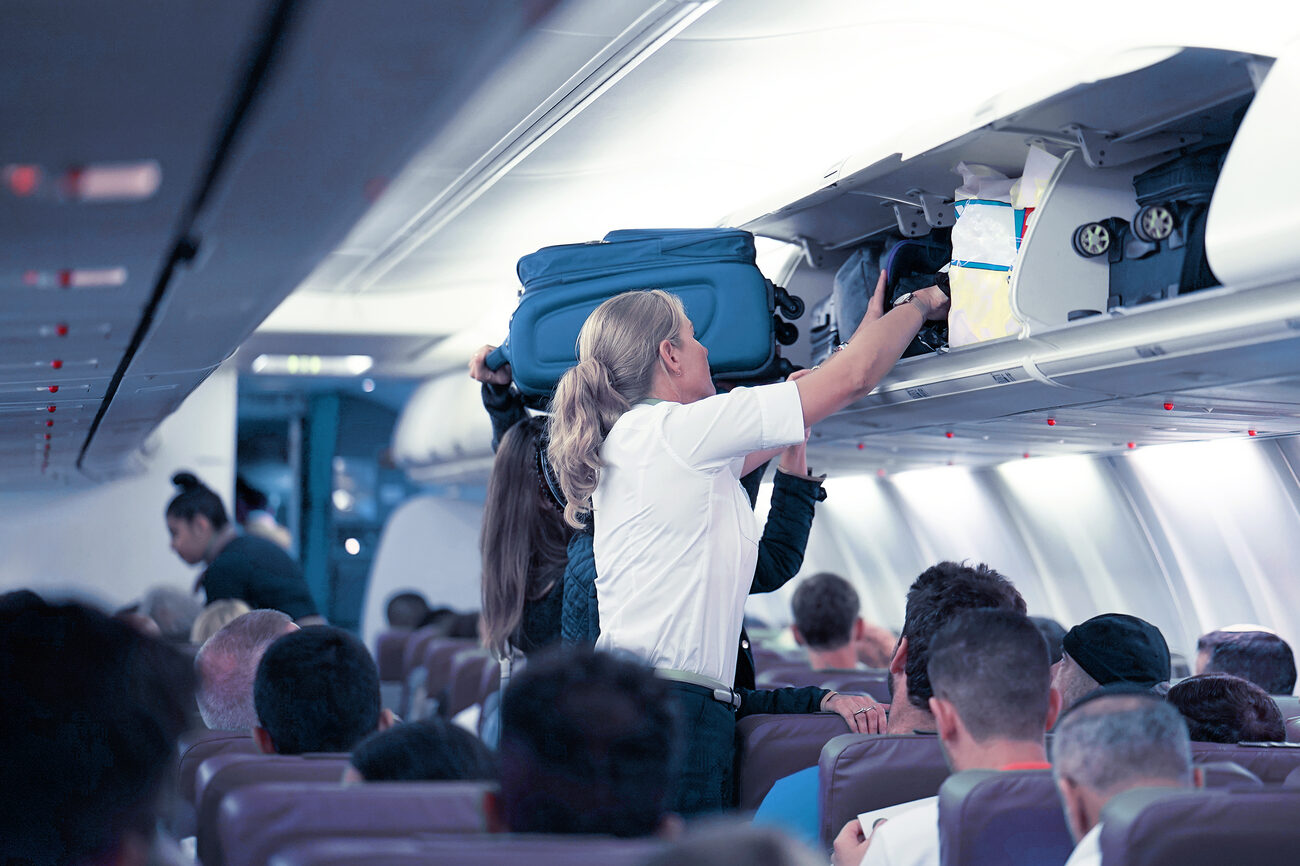
5. Don’t make a stink.
And we mean that literally. An airplane is a closed-system environment, which means that for hours, you’re trapped in whatever smells are brought in. If you’re bringing food on board, try to opt for something that doesn’t have a strong aroma. Eu de Tuna isn’t exactly an in-demand aromatherapy option! And while it may be tempting to douse yourself in your favorite perfume to mask other scents may be on the plane, be aware that some people may suffer allergies, be pregnant and therefore may become nauseated by certain smells, or simply have different taste in scents. On the other hand, though, don’t forget your deodorant! Body odors have a tendency to waft and linger … and that includes feet as well. Keep your socks on, at the very least.
At the end of the day, supporting travel doesn’t even have to mean adding to other passengers’ experiences. It just means not being obtrusive to it, and acting with the same amount of courtesy you’d show on the ground. A little respect goes a really long way toward making people feel comfortable up in the air, and we’re here for it.
Want more ways to be a better traveler? Learn about what it means to be a socially responsible traveler, an eco-friendly traveler, or a leader in sustainable travel! Plus, Four Ways to Soothe Travel Jitters and How to Avoid the Dreaded “Are We There Yet?” with Kids.
Don't forget - when in doubt, Ask a Travel Advisor!

